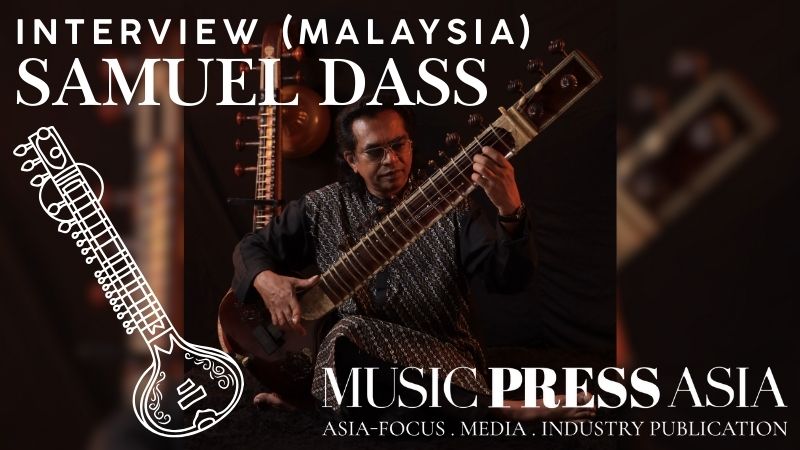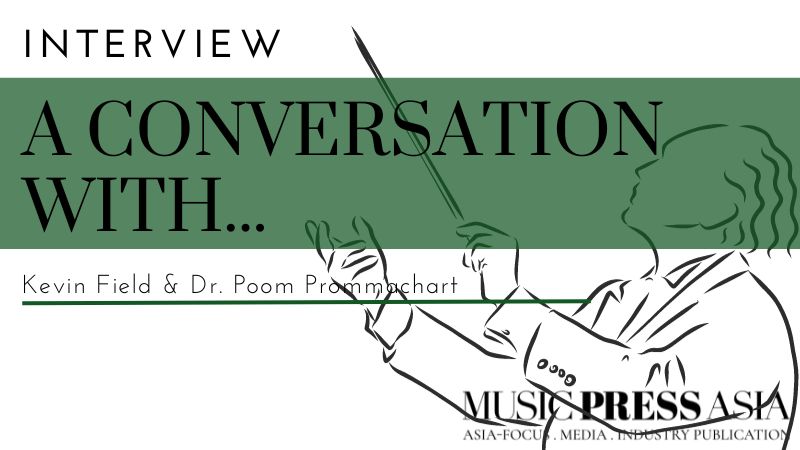Gayageum For The Modern Day Audience
An interview with South Korea’s gayageum trio Hey String.
An interview with South Korea’s gayageum trio Hey String.

Image courtesy of World Music Festival @ Taiwan [Wind Music].
On translating a classical instrument for the appreciation of the modern audience, Hey String – a gayageum trio from South Korea – answers Taiwan Beats questions on topics of popularization of a traditional instrument, performing again for the first time abroad since covid-19 and how their early days’ music education found a voice for expression for a live audience at their recent performance at the World Music Festival in Taiwan.
Included below is the commentary and interview provided via our correspondence Yulgong Lee from Taiwan Beats.
At a time when the exit of the Covid-19 pandemic is visible to us little by little, musicians from all over the world visited Taipei for the World Music Festival @ Taiwan. Among the many musicians who visited Taiwan, I met the gayageum trio Hey String, a traditional music group from a neighboring country, South Korea. Their music, which freely crosses boundaries with traditional and contemporary melodies by playing gayageum, a traditional Korean musical instrument, was one of the best stages for the festival that broke down boundaries and harmonized together.
Even on the rainy outdoor stage, I could feel their colorful and beautiful “potential” erupting like the title of their debut song “Potencia.” I interviewed Hey String in order to listen more closely to their activities and music that cross boundaries with their infinite potential.
Q 1: The traditional gayageum has 12 strings, but I can see more strings on your gayageum. Did you reform it by yourselves only for Hey String’s music? Then what kind of musical difference does this reformed gayageum have compared to traditional gayageum?
[Park, Ji-hyun]: Of course it’s not just for Hey String’s music. Originally, 12 strings are traditional gayageum, but about 40 to 50 years ago, 25 strings of gayageum were made by adding 13 strings. And it has been widely used for about 20 years, so it is also becoming a new traditional trend. What’s unique about our music is that we use percussive techniques together rather than using 25-string gayageum. Usually, beating gayageum isn’t a normal playing style. But we’re doing a unique gayageum performance by studying percussive techniques and putting them into our music.
Q 2: In fact, I think there was a perception that Korean traditional music was far from us, complicated and boring, and it was just a thing learned in school music class. However, these days, many new and trendy Korean traditional music bands which have their own colors come out, which makes Korean traditional music more familiar and popular. As such, ironically, things we already knew like original Korean traditional music feel rather difficult and popular and familiar things like young musicians’ traditional music come to us rather unique and attractive. In this respect, do you have any special thoughts on the popularization of Korean traditional music, the succession of traditions, or the creation of brand-new music?
[Oh, Ji-hyun]: I think there might be a lot of controversy about whether our music is real Korean “traditional” music or not. Of course, nobody says “you’re not a Korean traditional musician!” but someone might say, “do you think that you are a traditional musician just because you use traditional instruments?” But we’ve all studied traditional music since we were young, and we’re still doing it. Still, I think that there may be people who have different views and opinions, and I can accept them. However, I think the root of Hey String is Korean traditional music, and I think the newly created music based on this root has become known and loved by the public little by little now.
Q 3: In Korea, compared to western instruments such as the piano and violin, Korean traditional music is very difficult to access to learn when we are young. So how did you start gayageum?
[Kim, Ji-hyo]: I think all three of us are different. As far as I know, many gayageum musicians start by learning gayageum as an after-school class in elementary school. In my case, it didn’t start with gayageum. When I was learning samulnori (Korean traditional percussion quartet) in an after-school, I thought, “Huh? I want to major in traditional music.” But there happened to be a traditional music academy near my house. So I started learning gayageum for the first time there.
[Park, Ji-hyun]: Same with me. I also started in a traditional music academy.
[Oh, Ji-hyun]: I grew up in a rural area and studied in a place where there were few Korean traditional music academies, like a wasteland of traditional music. At first, I didn’t know anything about traditional music, but I started it at my mother’s recommendation.
Q 4: String trios in western classical music feel familiar, but the ensemble band made entirely of gayageum comes very unique. What was the reason for the formation of a gayageum band or what’s the strength of music made up of only gayageum?
[Park, Ji-hyun]: At first, we met to participate in a creative Korean traditional music competition as a project rather than creating a team. We were just people near each other. We were really close to each other in our department at the university. While working on the project and preparing for the competition, we thought that we fit well together. So we thought it would be nice if we could team up together. The reason why we decided to do this is that we know each other and gayageum well. Since we know a lot about each other, it has a synergy effect, so we can imagine and create a lot more things than when we played gayageum and studied alone, so we formed a team in earnest.

Q 5: It’s your first overseas concert after the Covid-19 pandemic. Especially after the performance in England, this time you played in a neighboring country in Asia. How was the performance in Taiwan?
[Kim, Ji-hyo]: It was my first time in Taiwan, and I saw a lot of other performers and musicians in Taiwan through this festival, so it was a great experience. Because of the pandemic, I thought that overseas performances might be delayed. Of course, there is still COVID-19, but it was great to come to Taiwan and perform like this because overseas performances resumed faster than I thought. I think this is the biggest festival we’ve ever participated in. So I was very nervous when we heard that there might be thousands of audiences. But I was really happy the audience responded so well and liked us. And there were so many booths that it was a festival where we could interact with people, so it was a really good experience.
Q 6: I think you’re getting a lot of connections with Taiwan. I know that you also collaborated with the Taiwanese traditional musician Sauljaljui last year. And like now, this year you visited Taiwan for a music festival. So, do you have any plans to collaborate with other artists in Taiwan or hold a concert in Taiwan?
[Oh, Ji-hyun]: We don’t have a specific plan yet, but I’d like to keep in touch with the staff and meet Sauljaljui in person. I’m really curious about other artists and musicians. We’re always open.
Q 7: As you collaborated with Sauljaljui in Taiwan, I wonder if you have any plans to interact with other countries’ traditional musicians.
[Park, Ji-hyun]: I think each team member may have different thoughts, but I think it would be good to collaborate with traditional African music, which has a lot of percussion instruments. Gayageum is a musical instrument with a tone and interval, but I think it also has percussive elements because we can express something by bouncing or beating strings. So I think that if we collaborate with traditional African music with various rhythms, it’ll be fun.
Q 8: What does the Hey String mean to you?
[Kim, Ji-hyo]: I think Hey String is my musical base. This is because we were able to get away from following the existing music we learned and try to create new styles of music with the members for the first time, so we were able to see ourselves grow together. And above all, the members know my gayageum performance style and music that I want to do the most, so I think Hey String is my musical foundation and base that I can continue to grow together.
[Park, Ji-hyun]: Hey String is like a “treasure ship” to me.
[Kim, Ji-hyo]: Then, did you find it?
[Park, Ji-hyun]: No, I’m still looking, but we’re all looking for it together. Our members are all on the same boat, starting from the beginning, going through and experiencing one by one, finding answers, bumping into the rocks, and repeating the process together. In this process, sometimes we meet rocks and obstacles, and sometimes there aren’t treasures, but nevertheless, it’s like a treasure ship because it’s fun to repeat our adventure of moving forward again.
[Oh, Ji-hyun]: I just thought of it, but I think Hey String is “Blood Sweat & Tears (title of BTS music)” to me. I think I grew up a lot by spending almost half of my 20s with Hey String and going through a lot of good things and many things together.
[INTERVIEW ENDS]
As Park, Ji-hyun said, a “treasure ship (寶船)” named Hey String dropped a new anchor in their journey on a “treasure island (寶島)” called Taiwan or Formosa. Having said that her music life in the Hey String is like a voyage on a treasure ship, she was astonished by the interviewer’s remark that Taiwan is called a treasure island and admired the coincidence. But perhaps this was fate, not a coincidence. Because it is a natural destiny and goal for a treasure ship to reach a treasure island. As such, at the end of the pandemic that has trapped us for the past three years, I hope that more treasure ships in the world will once again be connected with each other to music through treasure island, Taiwan. In the middle of that hope, there were today’s World Music Festival @ Taiwan and Hey String.
The interview was first published on Taiwan Beat’s official website.














